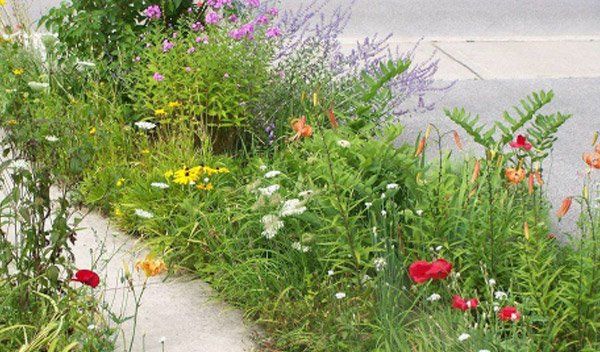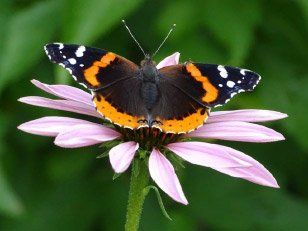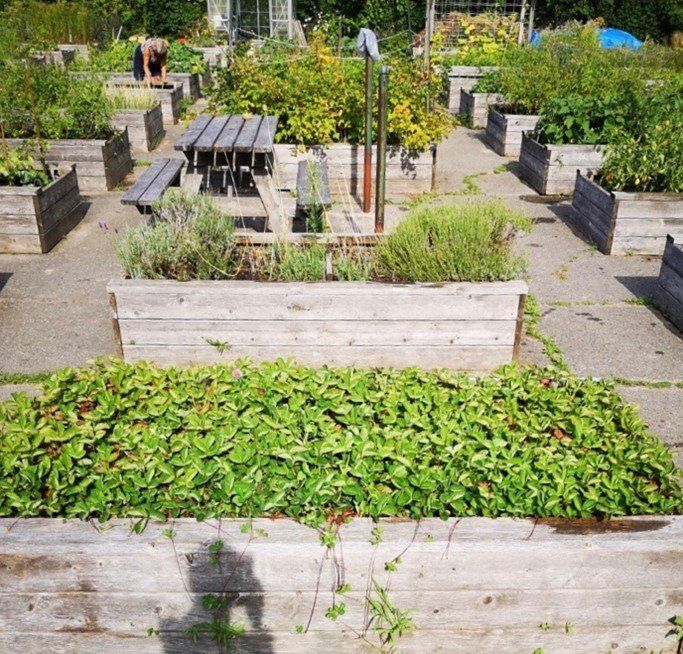Neonicotinoids — What Home Gardeners Might Want to Know
What Home Gardeners Might Want to Know
With the purchase in a local garden center or nursery of a rose, black-eyed Susan, sweet alyssum, or other flowering plant, could we unknowingly be contributing to the deaths of pollinating insects, and of possibly even birds? Perhaps surprisingly, the answer is yes.
The plants could contain neonicotinoids, a family of powerful pesticides with deadly consequences for bees and butterflies, the same pollinators that many of us try to attract to our gardens by planting pollinator-friendly flowers.
Neonicotinoids (neonics for short) have been linked to adverse ecological effects including commercial honey bee colony collapse and die-offs of native bees and other pollinating insects. They may also be responsible for a loss of birds with the reduction in insect populations.
Neonics are commonly used in modern, intensive agriculture and are marketed as a way to protect crops from harmful insects. They can be applied to seeds as a coating, used as a foliar spray, applied to soil as granules, or mixed in irrigation water. At least 75 percent of corn seeds and 50 percent of soy bean seeds, crops grown extensively in Ontario, are treated with neonics.
But neonics are also present in the home gardening sector in both flowers and vegetables. In 2018, the environmental group Friends of the Earth Canada bought a selection of common garden flowers including daisies, asters and lavender from five major retailers. The flowers are favoured by, especially native, bees which are responsible for pollinating one-third of the world’s crops and 90 percent of all wild plants. The samples were sent to the University of Guelph where they were tested for neonics. Half were found to contain traces of the chemicals (Globe and Mail, 18/04/2018).
Break down the Latinate scientific name, neonicotinoid, and you have: “new” (neo), “nicotine” (nicotin), and “like” (oid). Neonics are “new” because they have only been around since development in the 1980s and 1990s. They are “nicotine-like” because their mode of behaviour is similar to that of nicotine, which has been used as an insecticide for hundreds of years.
Because neonics are systemic, once in plant tissues they become persistent and are carried into new tissues as the plant grows. This is true both for agricultural crops and flowers and vegetables grown in home gardens.
The chemicals act as a neuro-toxin. If a honey bee consumes pollen containing neonics, it either dies outright or becomes permanently impaired and succumbs to a more lingering death. The same fate awaits native bees, butterflies and other insects that come into contact with pollen or plant tissue containing neonics.
Production nurseries (companies that produce plants for sale by retailers) are drawn to neonics because they allow the low-cost creation of large volumes of plants relatively free of blemishes. But they make the entire plant, from root to tip, toxic to insects for a year or more.
In 2017 a home gardener in Toronto conducted a survey of several big-box stores with garden centers in the city and found that awareness of neonics ranged from considerable to some to none. (http://sharonharris.ca/neonicotinoid-use-in-toronto-big-box-garden-centres/)
Although neonics are subject to regulated use in Ontario, the Ontario Beekeepers Association (OBA), in concert with 13 other Canadian conservation and environmental groups including the David Suzuki Foundation and Nature Canada, have called for a total ban on the pesticides in Canada.
In 2018, Health Canada’s Pest Management Regulatory Agency announced a three-to-five-year period to phase out some neonics. The OBA and others say this measure is insufficient and will allow the use of ecologically harmful neonics to continue until at least 2022-2023, maybe longer.
The European Union enacted a comprehensive ban on neonics that entered into force in December 2018.
What You Can Do
Concerned gardeners can take steps to help ensure the plants they purchase in garden centers and nurseries are free of neonics:
- Watch this CTV News video: https://barrie.ctvnews.ca/eco-group-warns-neonicotinoids-in-common-garden-centre-plants-1.1926834
- Check the labels on plants to see whether they are marked neonic free. If no such information can be found, ask staff. If staff can’t answer your question, ask to speak to the outlet’s manager and register with him/her your concern about neonics and ask that your concern be relayed to suppliers.
- Tell your neighbours and friends about neonics so they too can become advocates for a neonics-free environment.
Photos: Greg White
Latest Blog Posts







